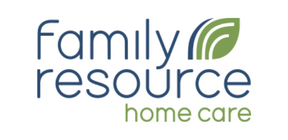Help wanted. Operating a business in this positive economic environment is both a blessing and a curse. While I celebrate our country’s current low unemployment rates, as a business owner finding the labor to meet the increased demand in the home care space is ever challenging. The Bureau of Labor Statistics already places home health aides, personal care aides, and nursing assistants in the number one, four and eleventh positions for forecasted job growth between the years 2016 and 2026. With the baby-boomer population hitting 65 years old at the rate of 10,000 per day, that demand is slated only to get higher. And, we haven’t yet begun to feel the impact of the first baby-boomers hitting age 80 in 2026, with the “grey tsunami” continuing to intensify until its peak in 2035. Given this segment of the aging boom is the largest consumer of home care services, current labor shortages pale in comparison to what we will experience in the near future. Further exacerbating the problem, according to a recent AARP study the population of available “unpaid family caregivers” will be nearly cut in half due to smaller sized families and the growing geographic distance between family members compared to previous generations. A clear solution to the growing problem of the paid caregiver shortage is increasing the number of legal immigrants to fill these positions.
The direct care workforce in the United States currently consists of 25% foreign-born individuals. Unfortunately, the legal mechanism for H1-B visas is constructed insufficiently to meet the needs of home care given the need to demonstrate that the immigrant possesses knowledge, skills, or abilities for a specific job. Identifying these factors as a sponsoring organization is difficult and this process is lengthy, expensive, and cost prohibitive for the home care industry. As a result, many of our qualified workers come through the family green-card system. This concept has been scrutinized and politicized in recent years but may be one of the few viable solutions to help meet our needs. The concept of the so-called “W-Visa,” which would have worked much like the H1-B but for high demand and lower-skilled positions like home care, gained some traction in the second Bush Administration but never materialized. As proposed in the original legislation, an additional 200k visas would be issued per year for specific industries that needed additions to their labor force.
Still, this solution, even if reconsidered, would not meet our immediate needs. Additionally, home care is not the only area of job growth needing significant pressure relief. Other areas of the long-term care continuum such as nursing homes, assisted living, and hospitals are often a pathway for immigrants to become trained and versed in English sufficiently to succeed as paid caregivers. And, while many undocumented workers may have the necessary skills to perform home care duties, home care agencies are unable to employ individuals who cannot legally work in the United States. In order to avoid a crisis in care, expanding the number of visas available to those who could work in the home care industry is crucial. This issue is neither Republican nor Democrat, it is an American issue. As a board member for HCAOA, and an active business voice in Washington DC, I will continue to share this message with both sides of the aisle.
Family Resource Home Care depends on our employees who have come here from other countries and I count them among the best our agency can provide to our clients. My wish is to increase these numbers tenfold as a way to meet the current and future needs of our country’s aging seniors. As Paul Ryan, former Speaker of the House put it, “We have something like a 90% increase in the retirement population of America, but only a 19% increase in the working population.” With this stark reality almost universally acknowledged, we will continue to work with the federal government to bring attention to the importance of opening our doors to those who want to legally immigrate, and thus bring assistance to our industry and some of our country’s most vulnerable populations.





